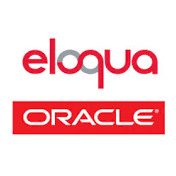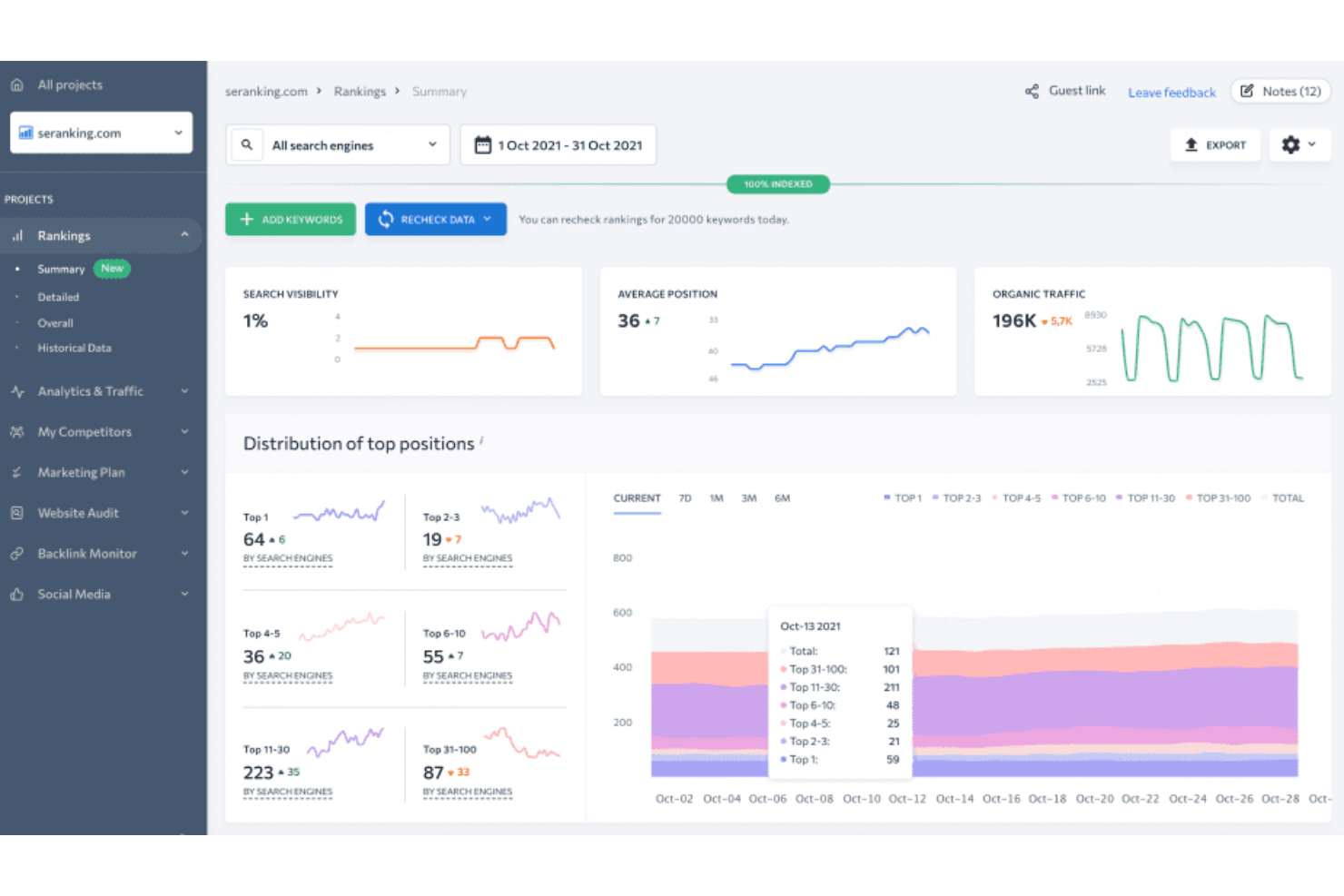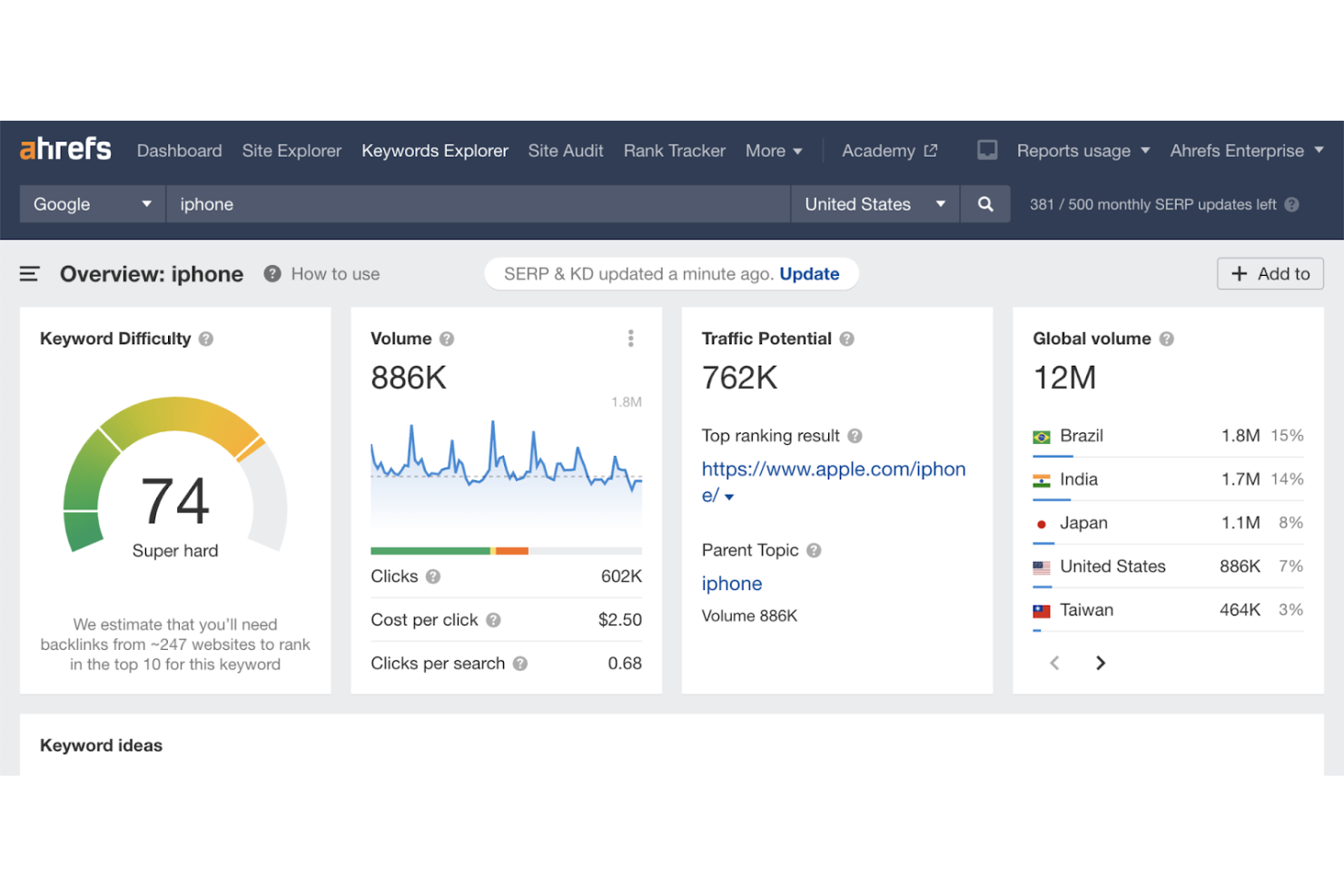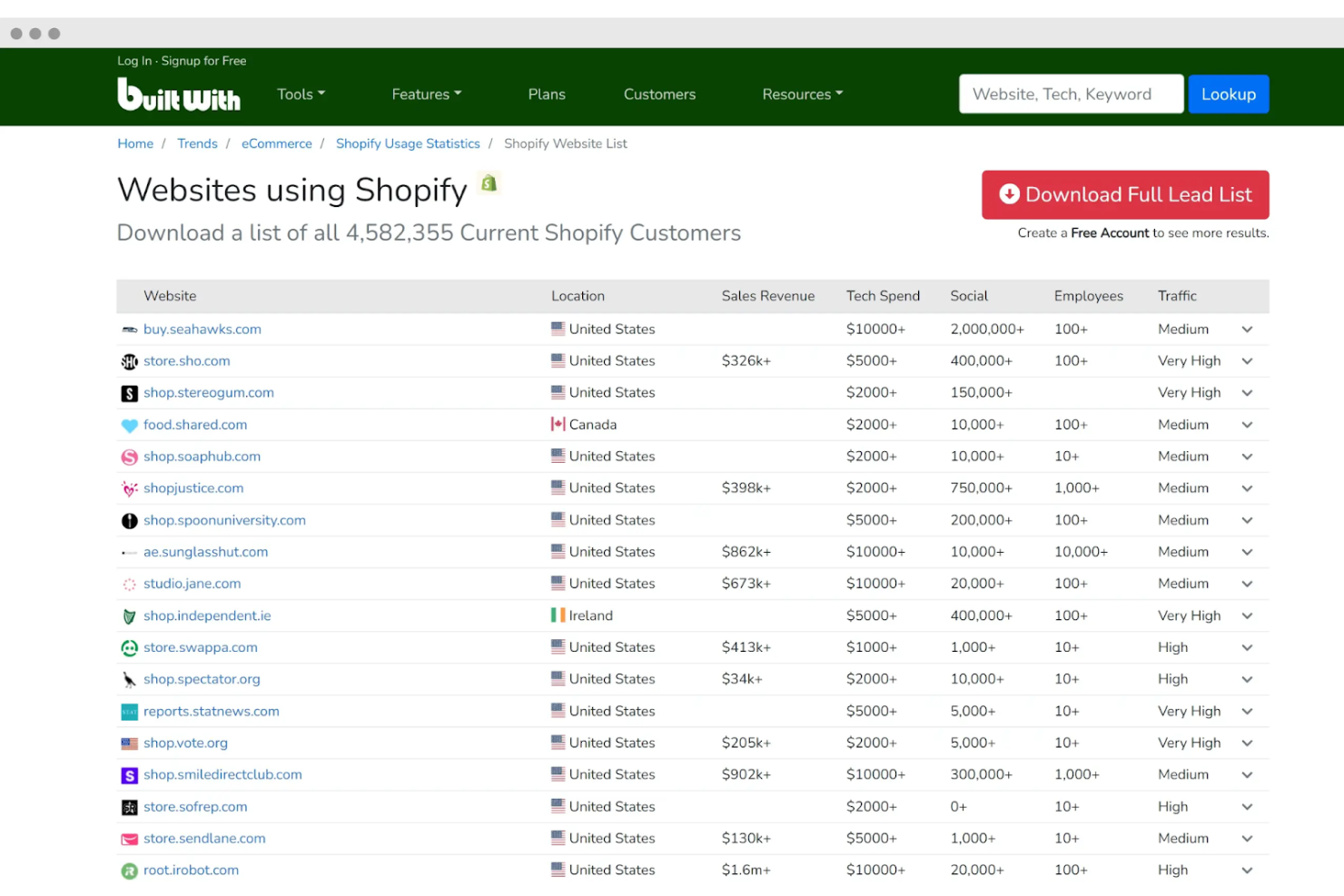Best Competitor Analysis Tools Shortlist
Here's my pick of the 10 best software from the 21 tools reviewed.
Our one-on-one guidance will help you find the perfect fit.
Competitor analysis tools are essential for any business, helping teams benchmark performance and spot market trends. However, finding the right tool can be challenging with so many options available
Using my experience with marketing software, I tested and compared several of the top competitor analysis tools available. From there, I compiled my results into detailed reviews to help you find the best software for your needs.
Why Trust Our Software Reviews
We’ve been testing and reviewing marketing software since 2022. As marketing managers ourselves, we know how critical and difficult it is to make the right decision when selecting software. We invest in deep research to help our audience make better software purchasing decisions.
We’ve tested more than 2,000 tools for different marketing use cases and written over 1,000 comprehensive software reviews. Learn how we stay transparent & check out our software review methodology.
Best Competitor Analysis Tools Summary
This comparison chart summarizes pricing details for my top competitor analysis tools selections to help you find the best one for your budget and business needs.
| Tool | Best For | Trial Info | Price | ||
|---|---|---|---|---|---|
| 1 | Best for rank tracking | 14-day free trial | From $52/month | Website | |
| 2 | Best for backlink analysis | Free plan available | From $129/month | Website | |
| 3 | Best for PPC competitor data | Free demo available | From $33/month (billed annually) | Website | |
| 4 | Best for content performance | Free trial available | From $159/month (billed annually) | Website | |
| 5 | Best for market insights | Free trial available | From $125/month (billed annually) | Website | |
| 6 | Best for tech stack analysis | Free plan available | From $295/month | Website | |
| 7 | Best for search trends | Free plan available | Free | Website | |
| 8 | Best for company insights | Free plan available | From $39/month (billed annually) | Website | |
| 9 | Best for ad strategies | Free demo available | From $59/month | Website | |
| 10 | Basic reporting features | Free demo available | Pricing upon request | Website |
-

Eloqua
Visit WebsiteThis is an aggregated rating for this tool including ratings from Crozdesk users and ratings from other sites.4.3 -

Optimizely
Visit WebsiteThis is an aggregated rating for this tool including ratings from Crozdesk users and ratings from other sites.4.2 -

Uberflip
Visit WebsiteThis is an aggregated rating for this tool including ratings from Crozdesk users and ratings from other sites.4.3
Best Competitor Analysis Tools Reviews
Below are my detailed summaries of the best competitor analysis tools that made it onto my shortlist. My reviews offer a detailed look at the key features, pros & cons, integrations, and ideal use cases of each tool to help you find the best one for you.
SE Ranking is an SEO platform designed for digital marketers and SEO specialists who need precise rank tracking and analysis. It provides tools for keyword research, site audits, and competitor analysis to enhance search engine performance.
Why I picked SE Ranking: SE Ranking helps your team keep track of search rankings, providing accurate insights to maintain visibility. You can monitor keyword positions, research competitors, and run website audits to understand your SEO performance. With its ability to track ranking changes, SE Ranking ensures your strategies stay effective. Its focus on rank tracking makes it a dependable tool for SEO efforts.
Standout features & integrations:
Features include keyword position tracking that provides daily updates on your rankings. Competitive research tools allow you to analyze your competitors' strategies. Website audit tools help your team identify and fix technical issues affecting your site's performance.
Integrations include Google Analytics, Google Search Console, Google Ads, Bing Webmaster Tools, Facebook, Twitter, LinkedIn, Zapier, HubSpot, and Trello.
Pros and cons
Pros:
- Comprehensive keyword analysis
- Detailed site audits
- Accurate rank tracking
Cons:
- Basic reporting features
- May require some technical knowledge
Ahrefs is an SEO toolset popular among digital marketers and SEO professionals who need to enhance their search engine performance. It offers comprehensive tools for backlink analysis, keyword research, and competitor monitoring to improve online presence.
Why I picked Ahrefs: Ahrefs helps your team analyze backlinks, offering detailed insights to improve your SEO strategy. You can use SEO tools like Site Explorer, Rank Tracker, Backlink Checker, and Keyword Explorer to optimize your site's authority. Focusing on backlink profiles, Ahrefs supports your link-building efforts, making it a valuable tool for SEO work.
Standout features & integrations:
Features include Site Explorer, which helps your team analyze your competitors' websites for backlinks and keywords. Backlink checker provides detailed information about your site's backlinks, helping you understand your link profile. Keyword Explorer allows you to find keywords that can improve your search rankings.
Integrations include Google Analytics, Google Search Console, Data Studio, WordPress, SEMrush, Moz, Majestic, HubSpot, Marketo, and Salesforce.
Pros and cons
Pros:
- In-depth competitor insights
- Keyword research tools
- Comprehensive backlink analysis
Cons:
- Basic reporting features
- Steep learning curve
SpyFu is a search analytics tool aimed at marketers and businesses looking to improve their pay-per-click (PPC) campaigns. It offers insights into competitors' PPC strategies and keyword performance.
Why I picked SpyFu: SpyFu specializes in providing detailed PPC competitor data, helping your team refine its ad strategy. You can do keyword research, track competitors, and review ad history to better understand and outperform them. Its focus on PPC data helps your team create more targeted and effective campaigns in a competitive environment.
Standout features & integrations:
Features include keyword research that reveals your competitors' most profitable keywords. Competitor tracking allows you to monitor and analyze their PPC strategies. Ad history lets you see how competitors' ads have performed over time, providing insights into their success.
Integrations include Google Ads, Google Analytics, Microsoft Excel, Moz, SEMrush, Ahrefs, HubSpot, Marketo, Salesforce, and Zoho CRM.
Pros and cons
Pros:
- Historical ad data
- Extensive keyword database
- Detailed PPC insights
Cons:
- No real-time updates
- Slight learning curve
BuzzSumo is a content research and analysis tool used primarily by content marketers and strategists. It helps users identify trending content and analyze its performance across various platforms.
Why I picked BuzzSumo: It provides excellent insights into content performance, helping your team understand what resonates with audiences. Features like content discovery, influencer identification, and performance analysis give you a complete view of what’s working in the content landscape. The tool's ability to track social shares adds depth to your content strategy. It stands out for its focus on understanding and improving content engagement.
Standout features & integrations:
Features include content discovery that lets you find trending topics in your industry. Influencer identification helps you connect with key figures who can amplify your content. Performance analysis offers insights into how content is shared and engaged across social media.
Integrations include Buffer, Hootsuite, Facebook, Twitter, LinkedIn, Pinterest, Slack, Trello, Zapier, and Google Analytics.
Pros and cons
Pros:
- Social share tracking
- Influencer identification
- Content discovery tool
Cons:
- May require slight learning curve
- Limited data export options
SimilarWeb is a digital market intelligence tool designed for businesses looking to gain insights into their market position and competitors. Its primary users include marketers and analysts who need detailed data on web traffic and audience demographics.
Why I picked SimilarWeb: SimilarWeb helps you get detailed market insights, making it great for competitor analysis. You can track traffic, see audience demographics, and compare your business to industry benchmarks. These features help your team understand market trends and adjust strategies. Its focus on accurate, detailed data is what sets it apart when it comes to market insights.
Standout features & integrations:
Features include traffic and engagement metrics that help you understand where your competitors stand. Audience insights give you a deeper look into who is visiting your competitor's sites. Industry trend analysis allows your team to stay ahead by understanding shifts in your market.
Integrations include Google Analytics, Salesforce, HubSpot, Marketo, Microsoft Power BI, Tableau, Adobe Analytics, Slack, Zapier, and Shopify.
Pros and cons
Pros:
- Extensive keyword research
- Reliable data accuracy
- Detailed audience insights
Cons:
- Can be expensive for small businesses
- Limited historical data
BuiltWith is a web technology profiler designed for marketers and developers who need insights into the technology stacks of websites. It helps users identify the tools and platforms competitors use, providing valuable data for strategic planning.
Why I picked BuiltWith: BuiltWith focuses on analyzing tech stacks, giving your team insights into the technologies behind websites. You can track tech usage, generate leads, and get alerts on changes. These features help you understand your competitors' technology strategies and market positioning. Its focus on tech stack analysis makes it a valuable tool for your team's research.
Standout features & integrations:
Features include technology tracking that lets you see which tools your competitors are using. Lead generation tools help your team identify potential business opportunities. Usage alerts notify you of changes in your competitors' technology stacks.
Integrations include Salesforce, HubSpot, Marketo, Microsoft Dynamics 365, Pipedrive, Zoho CRM, SugarCRM, Insightly, Zoho Analytics, and Google Sheets.
Pros and cons
Pros:
- Customizable reports
- Useful lead generation
- Detailed tech stack insights
Cons:
- Slight learning curve
- Limited user interface
Google Trends is an analytics tool used by marketers and researchers to track search trends and patterns over time. It helps users identify popular topics and seasonal trends, offering valuable insights for content and marketing strategies.
Why I picked Google Trends: It provides essential data on search trends, which is crucial for understanding audience interests. Features like real-time data analysis, topic comparison, and geographic insights allow your team to tailor content to market demands. The tool’s ability to highlight trending searches helps in planning timely campaigns. Its focus on search trends makes it indispensable for strategic planning.
Standout features & integrations:
Features include real-time data analysis that allows your team to monitor current search trends instantly. Topic comparison lets you evaluate the popularity of different subjects. Geographic insights provide data on where trends are emerging, helping you target specific markets.
Integrations include Google Analytics, Google Ads, Data Studio, Google Sheets, Tableau, Microsoft Power BI, Zapier, Slack, HubSpot, and SEMrush.
Pros and cons
Pros:
- Easy-to-use interface
- Topic comparison feature
- Real-time trend analysis
Cons:
- No historical data export
- Limited data granularity
Owler is a business information platform designed for professionals who need up-to-date company insights and competitor data. It provides information on company news, financials, and competitive analysis.
Why I picked Owler: Owler gives your team detailed company insights, helping you track competitors and industry news. You can set up alerts for company updates, monitor competitors, and analyze the market for better decision-making. By tracking industry trends, your team stays informed about shifts in the market. Owler's timely company insights make it a useful tool for staying ahead.
Standout features & integrations:
Features include company news alerts that keep you informed of the latest developments in your industry. Competitor tracking allows your team to monitor key players in the market. Market analysis helps you understand the broader industry landscape.
Integrations include Salesforce, Slack, Microsoft Teams, HubSpot, Google Workspace, Outlook, Trello, Asana, monday.com, and Zoho CRM.
Pros and cons
Pros:
- Customizable alerts
- Extensive competitor data
- Timely company insights
Cons:
- Requires data verification
- Basic reporting features
iSpionage is a digital marketing tool designed for advertisers and marketers who seek to enhance their ad strategies by analyzing competitor PPC campaigns. It specializes in providing data on competitors' ad performance and keyword usage.
Why I picked iSpionage: iSpionage gives your team insights into PPC strategies, helping you track competitor ads, monitor keywords, and analyze landing page performance. This data helps you refine your ad campaigns and stay ahead of competitors. Its focus on ad strategies makes it a valuable tool for improving your team's marketing efforts.
Standout features & integrations:
Features include keyword monitoring that helps your team keep track of competitors' keyword usage. Competitor analysis offers insights into their ad strategies. Landing page performance lets you see what’s working for others, helping you optimize your campaigns.
Integrations include Google Analytics, Google Ads, Microsoft Excel, SEMrush, Moz, HubSpot, Marketo, Salesforce, WordPress, and Microsoft Power BI.
Pros and cons
Pros:
- Keyword tracking capabilities
- Effective ad strategy analysis
- Detailed competitor insights
Cons:
- Requires technical knowledge
- Steep learning curve
AlphaSense is a market intelligence platform financial analysts and researchers use to gain insights into financial data and trends. It helps users conduct detailed market analysis and benchmark against industry standards.
Why I picked AlphaSense: AlphaSense gives your team access to specialized financial data, helping you make informed investment decisions. You can use advanced search, real-time data monitoring, and customizable alerts to stay on top of market trends. Its ability to analyze large volumes of financial reports is helpful for your strategic planning. AlphaSense's focus on economic data makes it a valuable tool for analysts.
Standout features & integrations:
Features include advanced search capabilities that allow your team to filter and find specific financial data quickly. Real-time data monitoring keeps you updated with the latest market developments. Customizable alerts notify you of important changes in the financial landscape, helping you respond swiftly.
Integrations include Salesforce, Microsoft Excel, Tableau, Bloomberg Terminal, Refinitiv, Slack, Microsoft Teams, Google Workspace, IBM Watson, and Snowflake.
Pros and cons
Pros:
- Advanced search capabilities
- Customizable alert system
- Detailed financial insights
Cons:
- High learning curve
- Complex setup process
Other Competitor Analysis Tools
Here are some additional competitor analysis tools options that didn’t make it onto my shortlist, but are still worth checking out:
- Sprout Social
For social media analysis
- Moz
For SEO insights
- DashThis
For dashboard creation
- Semrush
For keyword analysis
- Feedly
For trend tracking
- Serpstat
For website optimization
- Rival IQ
For social media audits
- Wappalyzer
For tech profiling
- Dash Hudson
For visual insights
- Social Blade
For influencer metrics
Competitor Analysis Tools Selection Criteria
When selecting the best competitor analysis tools to include in this list, I considered common buyer needs and pain points like identifying market trends and analyzing competitor strategies. I also used the following framework to keep my evaluation structured and fair:
Core Functionality (25% of total score): To be considered for inclusion in this list, each solution had to fulfill these common use cases:
- Track competitor performance
- Analyze market trends
- Monitor competitor keywords
- Identify competitor strategies
- Generate competitor reports
Additional Standout Features (25% of total score): To help further narrow down the competition, I also looked for unique features, such as:
- Predictive analytics
- Customizable dashboards
- AI-driven insights
- Real-time alerts
- Industry-specific metrics
Usability (10% of total score): To get a sense of the usability of each system, I considered the following:
- Intuitive interface
- Easy navigation
- Learning curve
- Customization options
- Visual data representation
Onboarding (10% of total score): To evaluate the onboarding experience for each platform, I considered the following:
- Availability of training videos
- Interactive product tours
- Access to templates
- Webinars for new users
- Supportive chatbots
Customer Support (10% of total score): To assess each software provider’s customer support services, I considered the following:
- Availability of live chat
- Response time
- Quality of support documentation
- Access to a support community
- Availability of phone support
Value For Money (10% of total score): To evaluate the value for money of each platform, I considered the following:
- Competitive pricing
- Features offered at each price tier
- Flexibility of pricing plans
- Cost of add-ons
- Return on investment
Customer Reviews (10% of total score): To get a sense of overall customer satisfaction, I considered the following when reading customer reviews:
- Consistency of positive feedback
- Common complaints
- Frequency of updates
- Customer retention rates
- Testimonials from similar industries
How to Choose Competitor Analysis Tools
It’s easy to get bogged down in long feature lists and complex pricing structures. To help you stay focused as you work through your unique software selection process, here’s a checklist of factors to keep in mind:
| Factor | What to Consider |
| Scalability | Will it grow with your team’s needs? |
| Integrations | Does it connect with your existing tools? |
| Customizability | Can you tailor it to fit your specific workflows? |
| Ease of Use | Is it straightforward for your team to learn? |
| Budget | Does it fit within your financial resources? |
| Security Safeguards | Does it protect your data effectively? |
| Support | Will you have access to timely customer support? |
| Features | Does it offer the features you need most? |
Trends in Competitor Analysis Tools
In my research, I sourced countless product updates, press releases, and release logs from different competitor analysis tool vendors. Here are some of the emerging trends I’m keeping an eye on:
- AI-driven insights: AI is being used to analyze competitor behaviour more deeply. This helps businesses predict future trends and adjust their strategies.
- Predictive analytics: More platforms are offering predictive capabilities that help forecast competitor moves and market shifts. This feature is becoming crucial for proactive strategy planning. Tools like SEMrush are incorporating predictive analytics.
- Customizable dashboards: Users want dashboards they can tailor to their specific needs. This trend allows teams to focus on the data that matters most to them.
- Real-time data access: Accessing up-to-the-minute data is becoming a priority. This trend is helping businesses react quicker to changes in the competitive landscape.
- Industry-specific solutions: Competitor analysis tools are increasingly offering industry-specific features. These cater to niche markets by providing tailored insights and metrics.
What are Competitor Analysis Tools?
Competitor analysis tools are software solutions that help businesses track and analyze competitors' strategies and performance. These tools are commonly used by marketing professionals, analysts, and business strategists to gather insights and make informed decisions.
With features like AI-driven insights, predictive analytics, and customizable dashboards, they help users understand market trends and optimize strategies. Ultimately, these tools provide the data needed to stay competitive and make strategic choices.
Features of Competitor Analysis Tools
When selecting competitor analysis tools, keep an eye out for the following key features:
- AI-driven insights: This feature uses artificial intelligence to analyze competitor data, helping predict future trends and strategies.
- Predictive analytics: It forecasts market shifts and competitor actions, allowing businesses to plan proactively.
- Customizable dashboards: This allows users to tailor their view to show the most relevant data for their needs.
- Real-time data access: It provides up-to-the-minute information, enabling quick reactions to changes in the competitive landscape.
- Industry-specific solutions: These are tailored features and insights that cater to niche markets, providing targeted data.
- Keyword research: This feature identifies the most effective keywords competitors are using, helping refine SEO strategies.
- Competitor tracking: It monitors competitor activities and strategies, offering insights into their market positioning.
- Link analysis: This feature evaluates the backlink profiles of competitors, aiding in the development of effective link-building strategies.
- Social listening: It tracks brand mentions and industry trends across social media, offering insights into public perception and engagement.
- Market trend analysis: This analyzes past and current market trends, helping businesses stay ahead of industry developments.
Benefits of Competitor Analysis Tools
Implementing competitor analysis tools provides several benefits for your team and your business. Here are a few you can look forward to:
- Informed decision-making: These tools provide data-driven insights, helping your team make strategic choices based on market trends.
- Improved market positioning: By analyzing competitors, your business can identify opportunities to differentiate and strengthen its position.
- Enhanced SEO strategies: Keyword research features help refine your SEO efforts by revealing effective competitor keywords.
- Proactive strategy planning: Predictive analytics allow your team to anticipate market shifts and plan accordingly.
- Optimized marketing efforts: Real-time data access ensures your campaigns are timely and relevant to current market conditions.
- Better resource allocation: By understanding competitor strategies, you can allocate resources more effectively to areas that will yield the best results.
Costs and Pricing of Competitor Analysis Tools
Selecting competitor analysis tools requires an understanding of the various pricing models and plans available. Costs vary based on features, team size, add-ons, and more. The table below summarizes common plans, their average prices, and typical features included in competitor analysis tools solutions:
Plan Comparison Table for Competitor Analysis Tools
| Plan Type | Average Price | Common Features |
| Free Plan | $0 | Basic keyword research, limited competitor tracking, and access to some reports. |
| Personal Plan | $5-$25/user/month | Advanced keyword research, basic analytics, and competitor tracking |
| Business Plan | $50-$100/ user/month | Comprehensive analytics, real-time data access, and customizable dashboards |
| Enterprise Plan | $150-$300/ user/month | Full feature access, predictive analytics, and dedicated account support |
Competitor Analysis Tools FAQs
Here are some answers to common questions about competitor analysis tools:
What are the obstacles to effective competitor analysis?
Effective competitor analysis can be challenging due to the difficulty in gathering accurate data and ensuring its relevance. Interpreting competitor strategies accurately without bias or assumptions is another obstacle. You need to focus on turning data into actionable insights for strategic decisions.
Which questions do we need to ask when we do competitor analysis?
When conducting competitor analysis, ask questions like what channels your competitors interact through or if they use franchises. Consider asking about their pricing strategies and promotions, and what factors influence customer decisions to leave or buy from them.
How do competitor analysis tools help in strategic planning?
These tools provide insights into competitor strategies, market trends, and customer behaviours. By understanding these elements, you can make informed decisions and anticipate market shifts. This information helps in crafting strategies that position your business competitively.
How can competitor analysis tools improve marketing efforts?
By analyzing competitors’ successful campaigns, you can identify trends and strategies that resonate with audiences. A competitive analysis tool can help track keywords, discover content gaps and topics through competitor research. It also allows you to compare overall content performance, identify SEO competitors and competitors domains, and analyze competitor’s traffic, allowing you to refine your marketing tactics.
What features should you look for in competitor analysis tools?
Look for features like real-time data access to information such as referral and organic traffic, tools for identifying keyword market share and competitive advantages, predictive analytics, and customizable dashboards. These features help in keeping your analysis timely and tailored to your specific needs. AI-driven insights, competitive intelligence such as SERP and website traffic, performance of competitors’ content, and analysis of competitors rank can also add significant value.
What’s Next?
Ready to grow? Subscribe to The CMO newsletter to stay on top of trends and get the latest tips, resources, and guides from our community of seasoned marketing leaders straight to your inbox.
























